Spinal diseases are becoming more and more young.One of the most common remains osteochondrosis, which is only recently considered an exceptional age-related disease.If it affects the cervix of the cervix, there may be a lot of pain in the neck, arms and head, which significantly reduces the quality of life.This is often accompanied by a number of other disorders and, if left untreated, leads to the formation of intervertebral hernias, large volumes of which require surgery.It is therefore important to diagnose cervical osteochondrosis as early as possible and to start treatment according to the situation.
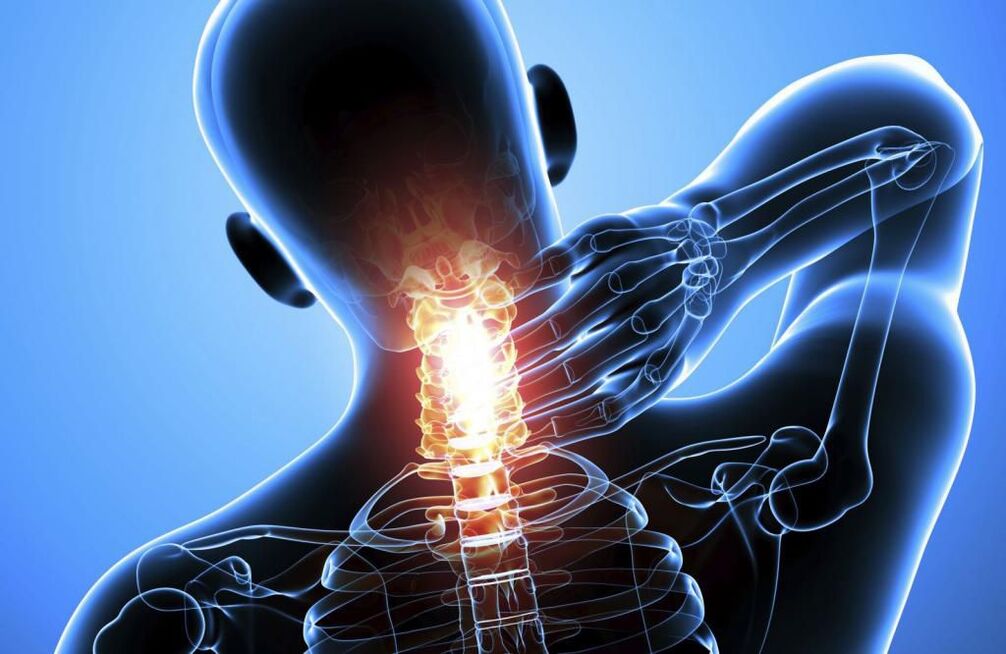
Symptoms of osteochondrosis of the cervical spine
Osteochondrosis of the cervical spine is a disease in which degenerative changes occur in the intervertebral discs.Initially, the discs, which are cartilage rings containing content -like content, become dehydrated.This is most often the result of a sedentary lifestyle, prolonged computer work, poor posture, neck injuries and a number of other factors.
This leads to a decrease in the strength of collagen fibers, forming the disc from the fibrosis of the violation.As a result, its thickness gradually decreases, which becomes the main cause of the development of symptoms characteristic of cervical osteochondrosis:
- Neck pain with varying degrees of intensity;
- Headache, dizziness, loss of consciousness caused by disruption of the cervical vertebrae arteries passing directly through the vertebrae, ie.the development of spinal artery syndrome;
- fluctuations in blood pressure levels;
- Radicular syndrome caused by pinching of the spinal roots, which is accompanied by irradiation of neck to arms, to the arms and fingers, to the head, shoulders, sensory disorders in these areas, the appearance of geese, numbness, etc.;
- reduction of the range of neck movement, appearance or intensification of pain when performing certain movements;
- increased fatigue, decreased efficiency;
- Tinitus, reduced visual acuity, development of ENT pathologies that are difficult to treat.
There are 7 vertebrae in the cervical spine.Most often, osteochondrosis affects the discs located between the 5th and 6th, as well as the 6th and 7th vertebrae.
In such situations, you should contact a neurologist who prescribes MRI.The results of this study allow the accurate identification of osteochondrosis in each, even the most planned stage of development, and to choose treatment.
Stages of development
Overall there are 4 stages of osteochondrosis development:
- Grade 1 - Pathological changes are still beginning to appear in the intervertebral disc, so the symptoms are mild and observed only from time to time.In such situations, treatment will be as effective and simple as possible.
- Degree 2 -changes in the discs become more pronounced, leading to the appearance of sick neck pain, which occurs and increases when the head movements are performed.
- Grade 3 - The pain becomes almost constant and can be complicated by the development of spinal artery syndrome, as well as the formation of convexity and intervertebral hernia.
- Grade 4 - the disc is so destroyed that the possibility of movement in the affected spinal segment for movement is almost completely off.In this case, severe pain is observed, radicular syndrome often develops and one or two spinal arteries are pressed, leading to the appearance of characteristic symptoms.
Treatment of cervical osteochondrosis
Thus, the tactics of cervical osteochondrosis are dependent on the severity of degenerative changes in the intervertebral discs, the age of the patient and its individual characteristics.Therefore, it always develops separately for each patient, but is always aimed at solving the following problems:
- Elimination of unpleasant symptoms that impair the quality of life of the patient;
- Improving the quality of blood circulation in the neck;
- Improvement of metabolic processes in the affected area;
- elimination of the causes of degenerative-dystrophic changes in the intervertebral discs;
- Reducing the risk of developing complications of osteochondrosis, ie.Protects, intervertebral hernias, spondylosis, etc.
In general, at every stage of the development of the disease, the use of various therapeutic measures is indicated.If at the 1st stage it will be sufficient to adjust your lifestyle and get involved in exercise therapy, then at the 2nd stage you will require a broader impact, additional, including taking a number of medicines, conducting sessions for manual therapy using orthopedic devices, etc.
However, patients need to understand that it is impossible to achieve reverse regression of degenerative dystrophic changes that have already occurred, especially if stage 2 or more osteochondrosis is diagnosed.In such situations, treatment will be aimed at improving the patient's well-being and stopping the further progression of the disease.Sometimes it is possible to completely correct the situation in the first stage of osteochondrosis, but at this stage of development, the pathology is extremely rare, as patients perceive negligible discomfort in the neck only as a sign of fatigue and do not consult a doctor.
In more severe cases, the treatment of osteochondrosis of the cervical spine will be even more complicated and prolonged.In any case, it is performed under the supervision of a neurologist with periodic monitoring examinations and correction of therapy depending on the changes in the well -being of the patient.
Lifestyle correction
All patients diagnosed with cervical osteochondrosis are advised to make certain changes in their lifestyle.In any case, these recommendations vary depending on the characteristics of human professional activity and many others.
The bigger part is advised to raise their physical activity and to rest from work at least every hour to warm up if they include sitting.In cases where the patient is actively involved in sports, it is recommended that he or she is reduced to the load of the cervical spine.This will show that it will give up running, jumping, lifting weights and fighting.
Overweight people are recommended to further take measures to reduce it, as well as adjust their diet.When osteochondrosis has already occurred, it is important that the diet meets the daily needs of the body as fully as possible.Therefore, it is worth giving up fast food and semi-finished products and approaching your diet to rational.This means that it is worth creating a menu so that half of the diet consists of vegetables and fruits and also contains enough protein.
Treatment of cervical osteochondrosis
Drug therapy is mainly aimed at eliminating the unpleasant symptoms of osteochondrosis of the cervical spine.As a rule, it is complex and involves the use of medicines from different groups, each solving specific problems.Therefore, it also develops separately for each patient.
NSAID
Non -steroidal anti -inflammatory drugs or NSAIDs are a wide group of medicines that have not only anti -inflammatory but also analgesic properties.They are available in various dosage forms, including tablets, capsules, ointments, gels and creams, as well as intramuscular solutions.NSAIDs should only be used on request, ie.When severe neck pain occurs.
For severe pain, NSAIDs can be administered intramuscularly.
The disadvantage of oral drugs in the NSAID group is their irritant effect on the mucous membrane of the stomach and duodenum.This can cause a worsening of the disease of these organs, in particular gastritis and peptic ulcers.To reduce such risks, proton pump inhibitors are prescribed in combination with them.
There are medicines that have a more tender effect on the gastrointestinal tract, which is why they are widely prescribed to relieve pain and inflammation in osteochondrosis.Also, more advanced drugs have already been developed, characterized by a selective effect, which is also often prescribed for osteochondrosis, but they are more expensive and not accessible to all patients.
Corticosteroids and injections (blocks)
Corticosteroids are hormonal drugs prescribed to patients with severe inflammatory processes.They can have a number of undesirable effects with long-term use, so they are prescribed in short courses in the most difficult cases.As a rule, the use of solutions for injection is indicated, as this method of administration is much easier to bear than the body and less likely to cause side effects.
Corticosteroids are often used in combination with topical anesthetics when performing blockades, that is, the rapid relief of very severe pain by introducing the prepared mixture at special points near the passage of the spinal nerves.The procedure requires certain skills and dexterity and can therefore be performed only in medical institutions by specially trained medical workers.Otherwise, the likelihood of developing unwanted consequences and complications is very high.
It is recommended that you make blockages no more than 4 times a year.
Muscle relaxants
Muscle relaxants are a group of medicines that are used to eliminate reflex muscle spasms caused by an acute inflammatory process.This often happens with cervical osteochondrosis and causes severe neck pain, which further aggravates the situation.
Vitamins
Because osteochondrosis creates significant prerequisites for compression of spinal roots, it is often indicated for the administration of vitamin complexes containing mainly in vitamins.They are directly involved in the transmission of nerve impulses, which is especially important for the development of radicular syndrome.
Chondroprotectors
Chondroprotectors are medicines around which many disputes occur.They are based on substances used by the body to restore damaged cartilage tissue, which determines the indications for their use in cervical osteochondrosis.But at the same time, there is no convincing evidence of their effectiveness in advanced forms of the disease.In the early stages of osteochondrosis, they actually have a positive effect on the condition of the intervertebral discs, which leads to an improvement in the patient's well -being.And at later stages, they can only help to inhibit the more advanced progression of degenerative changes in the intervertebral discs.
Chondroprotectors are produced in the form of powders to obtain solutions, capsules, current use products, and intramuscular solutions.The largest positive effect is observed by the latter.
Up -to -date products
These are precisely medicines available in the form of gel, cream or ointment, which patients often begin to use when signs of cervical osteochondrosis appear.They have different effects, including anti -inflammatory, analgesics, warming or, conversely, cooling and local irritation.
Often these products contain NSAIDs, so they help reduce pain, but are effective mainly in the early stages of osteochondrosis.Also, the components of such drugs can be menthol, hot pepper extract, snake or bee venom.
Local irritants act on the principle of irritation of the nerve endings of the skin, which is why there is a decrease in the severity of pain and increased blood flow in the area of administration.But such drugs are effective only in the initial stages of the development of cervical osteochondrosis.
Preparations to improve microcirculation
Medicines in this group are used to improve blood circulation quality, which is especially necessary for spinal artery syndrome.A number of medicines have a vasodilating effect that improves brain nutrition and helps to eliminate tinnitus, headache and dizziness.But without effectively eliminating the pressure factor on the spinal artery, such treatment will only provide temporary results.
Exercise therapy
Physical therapy is the basis for the treatment of osteochondrosis of the cervical spine.Today, there are many different and generally accepted methods for exercising cervical osteochondrosis therapy, but patients need to understand that there are no universal exercises.A set of exercises should be selected by a specialist on an individual basis, taking into account not only the stage of development of degenerative dystrophic changes, but also the age of the patient, the nature of existing concomitant diseases, the presence of radicular syndrome or compression of the spinal arteries.Therefore, various exercises for the same patients with approximately the same changes in the intervertebral discs may be shown.
In general, physical therapy has the following goals:
- strengthening the neck muscles and upper shoulder;
- Activation of blood circulation in the affected area, which will contribute to the restoration of the fibrous rings of the intervertebral discs;
- Normalizing muscle tone.
You need to do exercise therapy every day.In the beginning, it is best to visit special groups or work with an instructor for exercise therapy individually.This will allow you 100% to master the technique for performing each proposed exercise so that its performance can bring maximum benefit.The specialist will help you choose the optimal workload and develop a program to increase it, taking into account the level of physical development of the patient.
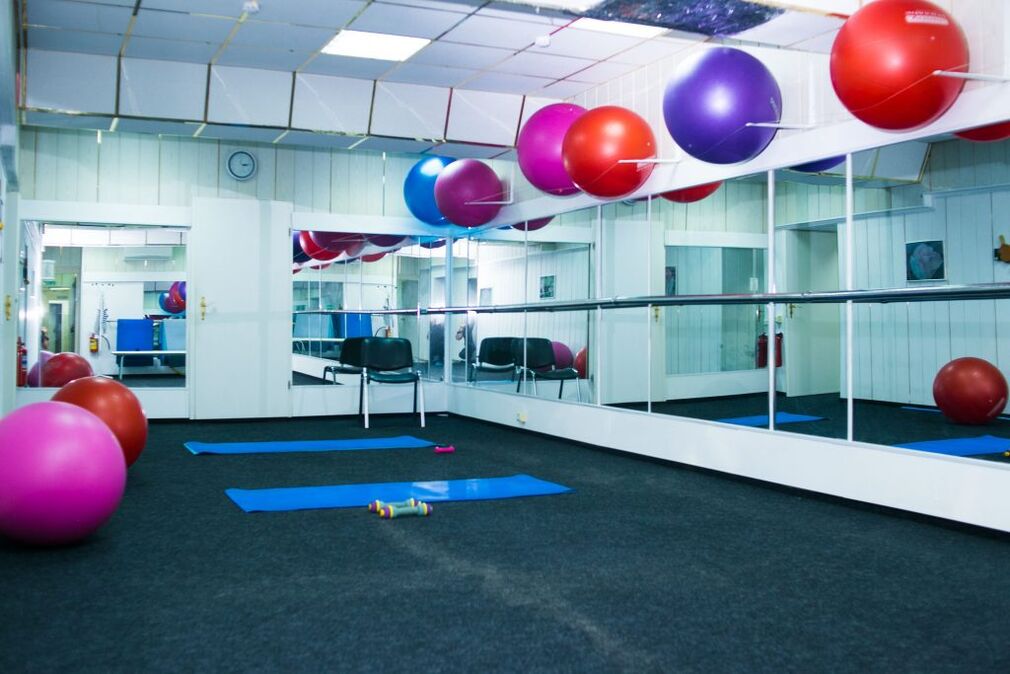
In the future, patients may practice exercise therapy independently at home.At the same time, it is important to approach this with full responsibility, to perform the exercises slowly, without hurrying and under convenient conditions.But if the pain occurs at any time during a workout, you should immediately stop performing the exercise, which causes it to occur and consult your doctor to determine the causes and adjust the exercise exercises for cervical osteochondrosis.
When doing exercise therapy, it is forbidden to do sudden, strong movements, rotate your head, or do exercise through pain.In such situations, there is a high risk of exacerbation of existing changes in the discs instead of obtaining the expected benefit.
Swimming has a very positive effect on the condition of the spine.This is exactly the sport that does not involve stress on the disks, but actively involves the muscles of the back and neck.As a result, the muscle corset is effectively enhanced, acting as a natural support for the spine.Therefore, if possible, patients are advised to visit the pool 2-3 times a week.
Manual therapy for cervical osteochondrosis
Manual therapy is one of the most effective methods of treating cervical osteochondrosis as it allows you to affect not only muscles and soft tissues, but also the spine itself.But it is very important to take a responsible approach when choosing a chiropractic, since improper or too strong influence can lead to a worsening of the patient's condition and even for the development of complications.Such a specialist should not only have a higher medical education and a license for practicing manual therapy, but also has a good understanding of the characteristics of anatomy and osteochondrosis and has sufficient experience.
Do not confuse manual therapy and therapeutic massage.The differences between these types of manual therapy are significant, as therapeutic massage includes only soft tissues, while during manual therapy the doctor also works on the spine.
So, each session with manual therapy begins with a bun that allows you to prepare the skin for more active effects.In the future, friction, mixing and squeezing techniques are used, allowing you to activate blood flow to the collar, neck and upper back.If the skin and muscles are sufficiently warmed and the patient is relaxed, the doctor begins to perform techniques for mobilization and manipulation.They suggest the application of turns with oscillatory movements, the pressure in the direction of the most pronounced restriction of movement, which leads to increased mobility of the spine and the elimination of functional blocks.
Thus, thanks to qualified manual therapy, it is possible:
- normalize the position of the vertebrae, thus eliminating increased pressure on the intervertebral discs and creating favorable conditions for their recovery;
- Elimination of pain caused by cervical osteochondrosis and its complications;
- Bring too relaxed muscles to a normal tone and relax the spasmodic muscles;
- increase in neck mobility;
- Removing pressure on the spinal arteries and thus normalizes blood flow to the brain;
- Eliminate compression of the spinal roots and thus normalize the bioelectric impulses to those innervation organs to which they are responsible, as well as reduce pain.
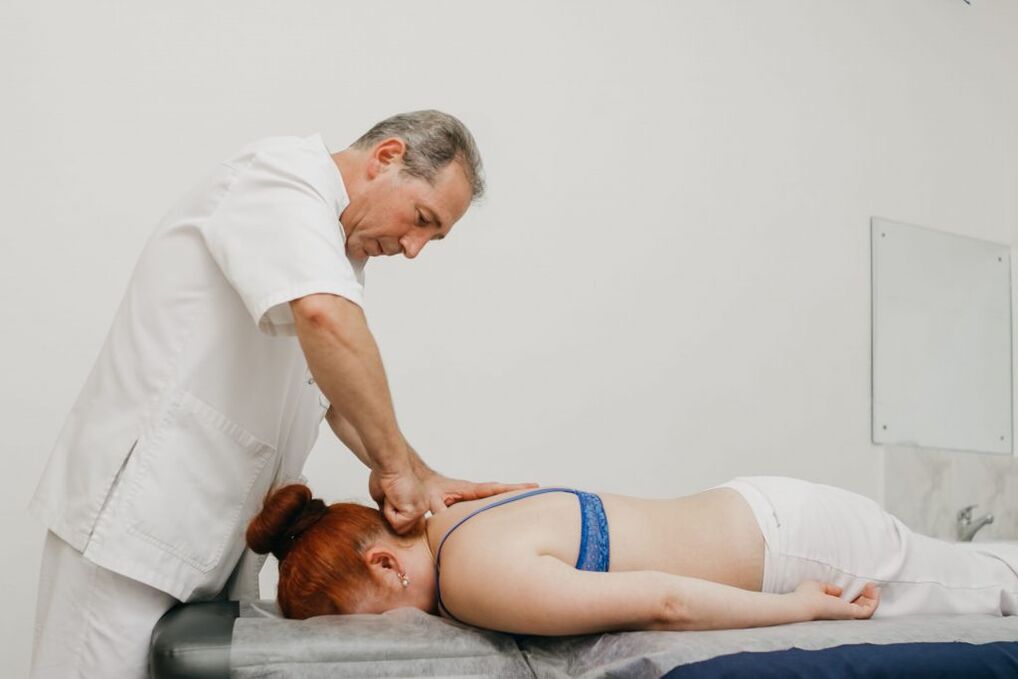
It is especially worth emphasizing the author's method for manual therapy.It involves the use of special, patented impact techniques that allow to obtain a pronounced result after the 1st session, not only from the part of the neck affected by osteochondrosis, but also on the whole body.As a result, not only the pain and other symptoms of the disease disappear, but the functioning of all organs is also improved and the immune system increases.The second and subsequent sessions increase the positive effect and consolidate it, which guarantees that if other medical recommendations are followed, the remission period will last as long as possible.
Self -massage
To improve their well -being, patients can periodically perform an end in itself to relieve fatigue and reduce pain.To do this, sit in a comfortable position and try to relax the muscles of your neck.Then make movements with your palms with your palms, gradually moving to circular friction, capturing the shoulder area.All movements are made from the spine without sudden and intense pressure.In this case, you can use local anti -inflammatory drugs recommended by your doctor.
Physiotherapy
Physiotherapy is shown outside the acute inflammatory process.It allows you to consolidate the achieved treatment results and further improve the patient's condition.As a rule, a course of 10-15 procedures is prescribed, selected separately for each patient.Can be:
- Electrophoresis - involves the use of electrical current to ensure a deeper penetration of these drugs.
- Magnetotherapy - helps to activate blood circulation in the area of influence and stimulate the course of metabolic processes.In addition, magnetic therapy sessions have an analgesic effect and help to eliminate swelling.
- Laser therapy has an anti -inflammatory, vasodilating effect, which leads to a decrease in the severity of the pain.
- Ultrasound therapy is a method of physiotherapy based on the positive effect of ultrasound waves on the body.They help to reduce the sensitivity of the nerve endings and also have an anti -inflammatory and analgesic effect.
- Diademic currents - Procedures lead to a decrease in pain, improve tissue nutrition, have a positive effect on the muscles and help to eliminate inflammation.
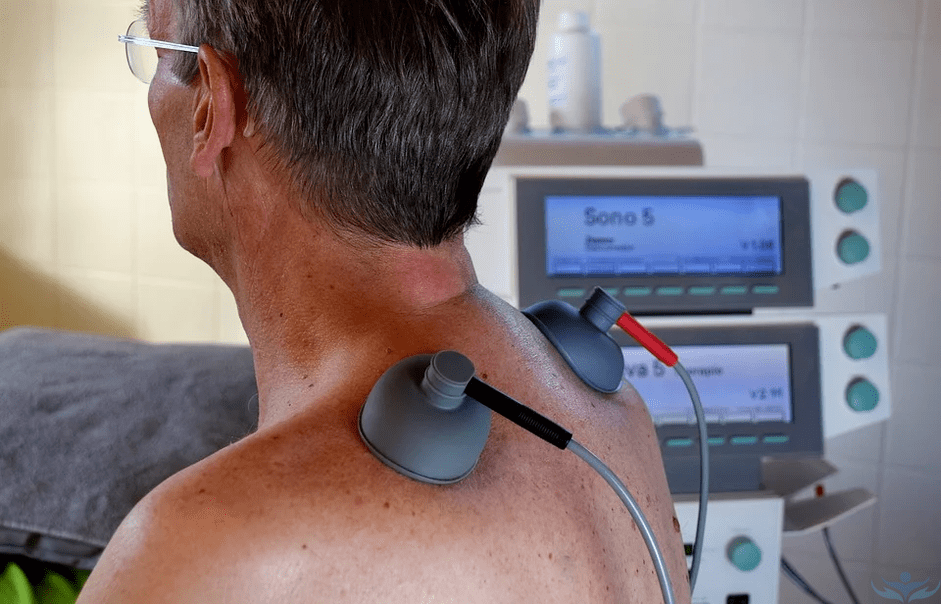
Adhesion therapy
When the vertebrae are assembled due to the leveling of the intervertebral discs, grip is indicated using a Glisson cycle.The essence of the method is to apply a precisely adjusted tensile load on the cervix, using a special device that fixes the head and has a load on the opposite side.Such procedures help to increase the distance between the vertebrae, which leads to a decrease in pressure on the disks and creates favorable conditions for their recovery.But such therapy can only be prescribed by a doctor.
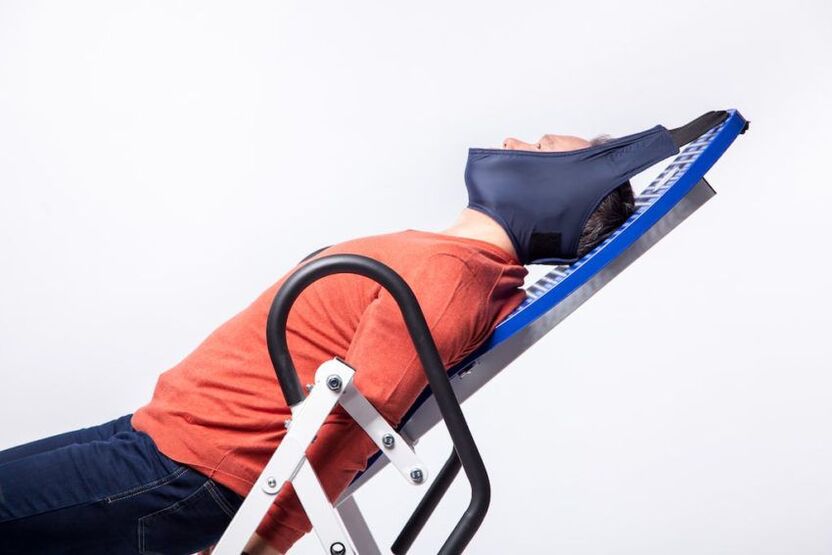
Needle applicator
Iplicator is a simple, affordable remedy for the neck area.This can be a plate of spikes that should be placed under the neck or similar device, but in the form of a roll.Due to the tingling of the thorns, the skin receptors are irritated, leading to a more active blood flow to the affected area.
Some patients note a decrease in neck pain after using the applicator, as well as an increase in work, improved sleep quality and restoration of neck mobility.But if you have skin lesions in the affected area or vascular diseases, you should not use a needle applicator.
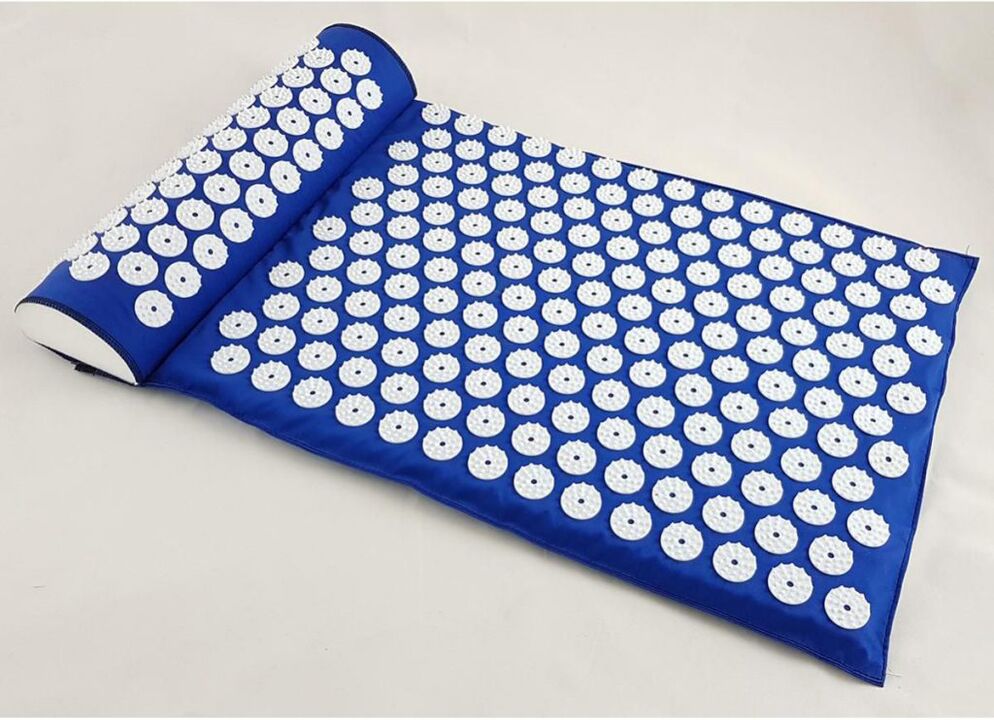
Orthopedic devices
In order to reduce the load on the cervical spine, it is recommended to replace the mattress and the orthopedic pillow, as sleeping an inconvenient pillow causes additional compression of the arteries of the vertebrae and nerve trunks during sleep.The orthopedic products are without this disadvantage and guarantee the maintenance of the physiologically correct position of the spine along the entire length and thus reduce the rate of progression of existing osteochondrosis.
But it is important to choose the right pillow and mattress so that they match the individual characteristics of the patient and contain appropriate filling.Thanks to them, it will also be possible to improve the quality of sleep and to wake up in the morning cheerful and rested.
Also, some patients are recommended to wear a blackbird collar.It is a movable orthopedic device that allows you to fix the neck and significantly reduce the load on the cervical spine, for example, when you work on a computer or after injury.The collar is placed before the expected neck load, but must be removed during sleep and rest.They differ in design, height, degree of fixation, so only the attending physician can choose the optimal.
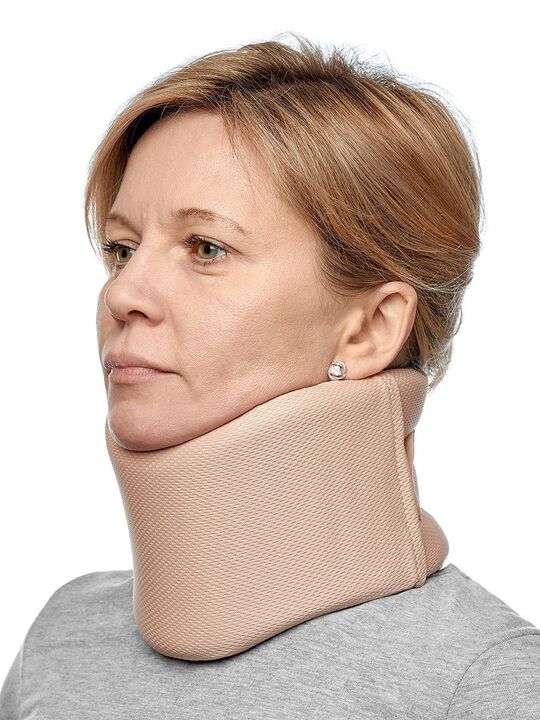
Thus, the treatment of cervical osteochondrosis can be quite long and complicated.You should be prepared for this, as there is no other way to stop the development of changes in the intervertebral discs, to avoid the development of complications and the need for surgery.But in most cases, patients improve within the first weeks of treatment.At the same time, it is important not to self-medicate, but to contact a neurologist, as only a qualified specialist will be able to determine the degree of osteochondrosis and choose the most appropriate treatment of the disease for a particular patient.


















































